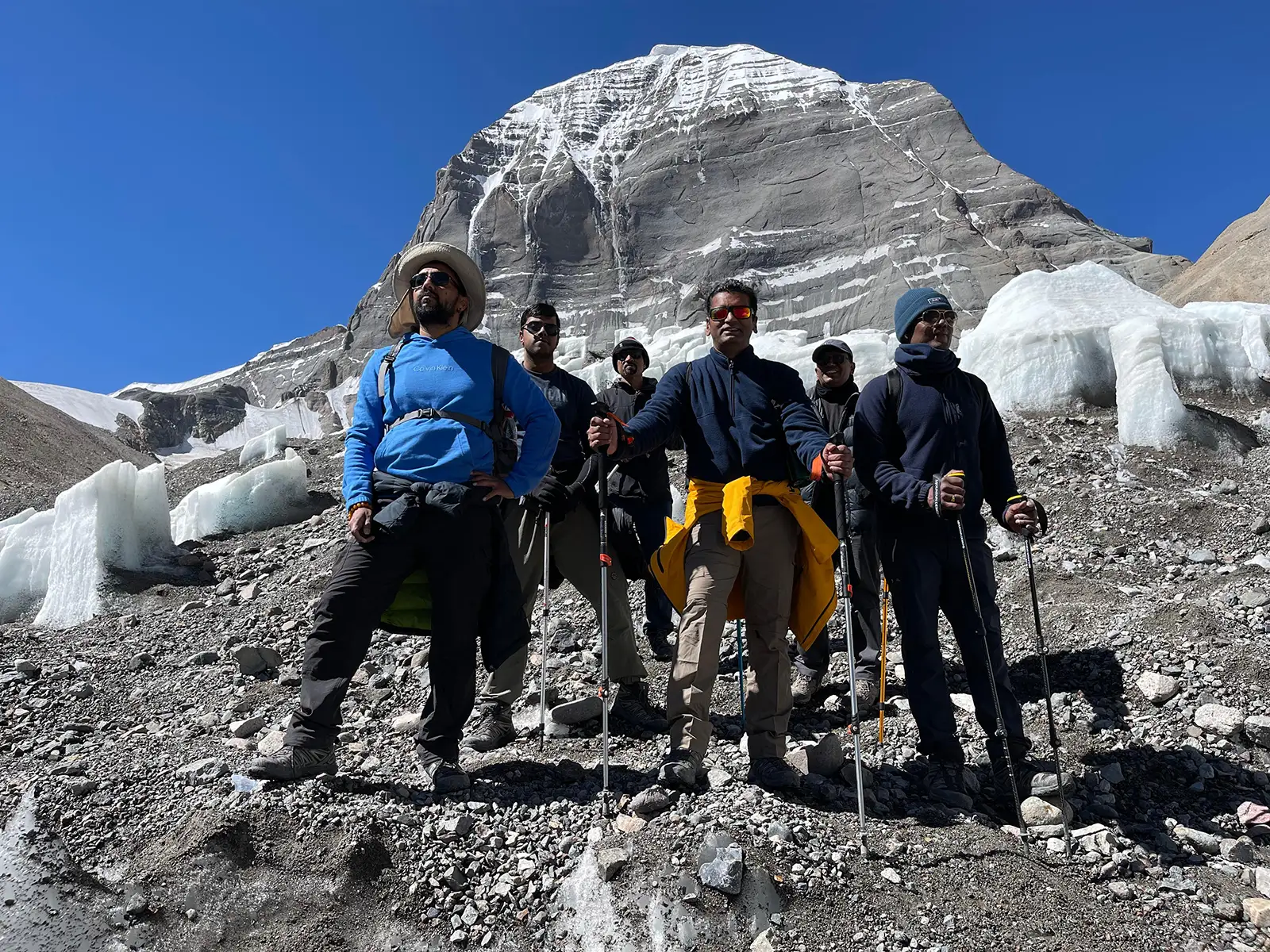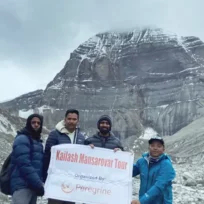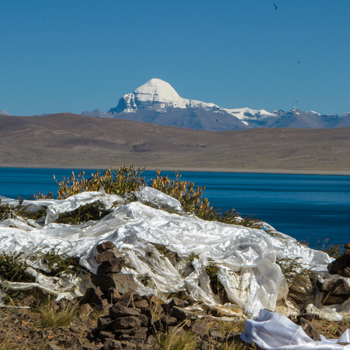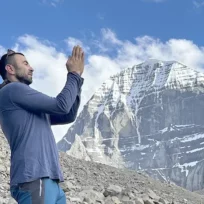The Kailash Mansarovar Yatra is a pilgrimage steeped in profound spiritual significance for Hindus, Buddhists, Jains, and Bon followers. Circling the sacred Mount Kailash and Lake Manasarovar on the Tibetan Plateau, this trek promises a transformative experience, connecting pilgrims to their faith and inner strength. However, “How difficult is the Kailash Mansarovar Yatra?” is frequently asked. While the spiritual rewards are immeasurable, the Yatra presents a formidable physical challenge. This unique combination of spiritual devotion and physical exertion makes preparation essential.
Understanding the trek’s difficulty is crucial for several reasons:
- Safety: High altitudes, rugged terrain, and unpredictable weather require specific gear, acclimatization strategies, and awareness of potential risks.
- Success: Proper training and physical conditioning are necessary to complete the Yatra and fully embrace its spiritual essence.
- Enjoyment: Knowing what to expect allows pilgrims to manage expectations, pack appropriately, and focus on the spiritual tour rather than unexpected hardships.

Understanding the Route
The physical challenges you face during the Kailash Yatra depend heavily on which route you choose and its length. Let’s delve into the options available:
Route and Distance
There are two primary routes for the Kailash Tour, each offering a unique experience and varying levels of difficulty:
1. The Outer Kora (Parikrama)
- Distance: Approximately 38 miles (60 kilometers)
- Duration: Typically takes 4-5 days
- Overview: This route circumnavigates both Mount Kailash and Lake Manasarovar, offering stunning views of both sacred sites. It’s generally considered less strenuous than the Inner Kora but still presents challenges due to the high altitude and rugged terrain.
2. The Inner Kora (Parikrama)
- Distance: Approximately 32 miles (52 kilometers)
- Duration: Typically takes three days
- Overview: This shorter, more demanding route focuses solely on circling Mount Kailash. It reaches higher altitudes, often exceeding 18,500 feet (5,600 meters), making it a more strenuous trek. However, it offers a closer encounter with the sacred mountain and its spiritual energy.
Important Considerations
- Acclimatization: Acclimatization to high altitudes is crucial regardless of the chosen route. Plan for rest days at various points along the trek to allow your body to adjust.
- Weather: The Himalayan weather is known for its swift and unpredictable changes. Be prepared for various temperatures and potential delays due to snow or rain.
- Individual Pace: The duration of the Yatra can vary depending on personal fitness levels, acclimatization needs, and weather conditions. Be flexible and prioritize safety over speed.
Terrain Types
- Rocky Paths: You’ll spend much of the trek navigating uneven, rocky trails that can become slippery, especially when wet. Secure footing and sturdy hiking boots are essential.
- Steep Ascents and Descents: Prepare for numerous challenging climbs and descents that test your leg muscles and cardiovascular system. Trekking poles can offer valuable support.
- High-Altitude Passes: The Yatra crosses several high passes where the air thins out, increasing the risk of altitude sickness. Dolma La Pass, towering at 18,600 feet (5,670 meters), is the most demanding.
- Loose Scree: Some stretches involve walking on loose scree—small, shifting rocks that can be tiring and require careful steps to avoid slipping.
- Glacial Moraines: You might encounter glacial moraines, the rocky remnants of glaciers. These can be unstable and require careful navigation.
- River Crossings: Depending on the season and your chosen route, you may need to ford streams or rivers. Anticipate wet feet and challenging crossings, particularly during the monsoon season.
Be Prepared
Understanding the terrain’s diversity is critical to a safe and enjoyable Yatra.
- Footwear: Invest in high-quality, waterproof hiking boots with excellent ankle support.
- Trekking Poles: These are invaluable for maintaining balance and stability, especially on steep inclines and declines.
- Acclimatize: Gradually increase your altitude to allow your body to acclimate, minimizing the risk of altitude sickness.
- Physical Fitness: Regular cardio workouts and strength training will boost your endurance and leg strength, preparing you for the physical demands of the trek.
How Difficult is the Kailash Mansarovar Yatra? A Look at the Physical Challenges
The Kailash Mansarovar Yatra isn’t just a spiritual quest; it’s also a test of your physical limits. Let’s break down the challenges you’ll face:
Altitude – The Thin Air Test
The Yatra takes you above sea level, where the air thins out and oxygen levels drop. You’ll feel the altitude at Drolma La Pass, the highest point (18,600 feet or 5,670 meters). It can lead to:
- Altitude Sickness (AMS): Headaches, nausea, dizziness, fatigue, and shortness of breath are common symptoms of Altitude Mountain Sickness. Acclimatization is vital to avoid or manage it.
- Reduced Stamina: Physical activity becomes more complicated as you climb higher. Simple tasks can leave you winded.
- Dehydration: The dry air at high altitudes sucks moisture from your body, so staying hydrated is crucial.
Daily Treks – What to Expect
The length and duration of each day’s trek depend on your chosen route (Outer or Inner Kora) and your pace. However, here’s a general guideline:
- Distance: You’ll typically cover 5-12 miles (8-19 kilometers) daily.
- Duration: Plan for 6-8 hours of trekking per day, with variations depending on the terrain and elevation gain.
- Rest Stops: Regular breaks are built into the itinerary so you can rest, refuel, and soak in the incredible views.
Weather – The Wild Card
Himalayan weather is unpredictable and can change quickly. Get ready for a mix of conditions:
- Summer (June-August): These are the warmest months but still cool, especially at night. Monsoon rains and occasional snow at higher elevations are possible.
- Autumn (September-October): Clear skies and pleasant temperatures are the norm, but nights can get chilly.
- Spring (April-May): Similar to autumn, but with a higher chance of snow early in the season.
- Winter (November-March): The Yatra isn’t feasible during winter due to extreme cold and heavy snowfall.
Practical Tips for Success
- Train in Advance: A few months before the Yatra, start a fitness program to build cardiovascular endurance and strength.
- Acclimatize Gradually: Plan a gradual ascent with rest days to help your body adapt to the altitude.
- Pack Layers: Dress in layers to quickly adjust to changing temperatures.
- Drink Plenty of Fluids: Stay hydrated to combat the drying effects of high altitudes.
- Consult Your Doctor: Get a check-up before the Yatra, especially if you have any pre-existing health conditions.

Your Fitness and Preparation Guide
While the Kailash Mansarovar Yatra is a spiritual pilgrimage, it’s crucial to acknowledge the significant physical demands it places on your body. Being adequately prepared ensures a safer and more enjoyable experience.
Fitness Requirements
The Kailash Mansarovar Yatra isn’t a casual stroll; it’s a multi-day trek at high altitudes. You should have good physical fitness to complete it. Here’s a breakdown:
- Cardiovascular Endurance: The air at high altitudes is thinner, so you’ll walk for several hours daily. Regular cardio exercise, like brisk walking, jogging, or cycling, will build your stamina.
- Leg Strength: The terrain involves steep ascents and descents, requiring strong leg muscles. Include exercises like squats, lunges, and stair climbing in your training.
- Core Strength: A strong core provides stability and helps prevent injuries. Incorporate exercises like planks and Russian twists into your routine.
- Balance and Agility: Uneven terrain requires good balance and agility. Practice walking on uneven surfaces and consider activities like yoga or tai chi.
Training Tips
To prepare for the physical demands of the Kailash Mansarovar Yatra, start training several months in advance. Here are some tips:
- Build Endurance: Incrementally enhance your cardio exercise’s duration and intensity. Aim for at least 30-60 minutes of moderate-intensity exercise most days of the week.
- Incorporate Strength Training: Focus on exercises that target your legs, core, and back. Include 2-3 strength training workouts in your weekly routine.
- Practice Hiking: Hike on trails with similar terrain and elevation gain to what you’ll encounter on the Yatra. It will help your body adapt and build the necessary muscles.
- Simulate Altitude: If you live at a low altitude, consider using an altitude simulation tent or spending time at higher elevations before the Yatra.
- Listen to Your Body: Don’t push yourself too hard during training. Allow time for rest and recovery.
Conquering the Mental and Emotional Peaks of the Kailash Mansarovar Yatra
The Kailash Mansarovar Yatra is more than a physical trek; it’s a tour that tests your mental resilience and emotional strength. Prepare yourself for these challenges to thrive on this pilgrimage truly.
Psychological Hurdles on the Path
Long treks in remote areas like the Tibetan Plateau can take a toll on your mind:
- Loneliness: Days away from the comforts of home and familiar routines can trigger feelings of isolation.
- Anxiety: Unpredictable weather, challenging terrain, and possible delays can create uncertainty and stress.
- Mental Fatigue: Exhaustion, cold weather, and primary living conditions can wear you down mentally.
- Group Dynamics: While rewarding, traveling in a group also means navigating interpersonal relationships and adapting to different personalities.
Strategies to Stay Strong and Positive
Mental preparation is crucial for a successful Yatra. Try these strategies:
- Set Realistic Expectations: Acknowledge that the Yatra will be physically and emotionally demanding. Prepare yourself for the ups and downs.
- Reconnect with Your Purpose: Your spiritual intentions will strengthen and motivate you during challenging times.
- Practice Mindfulness: Incorporating meditation and deep breathing exercises into your routine can ground you, manage stress, and enrich your overall experience.
- Open Up to Others: Share your feelings with fellow pilgrims or the support team. Open communication fosters camaraderie and a sense of community.
- Journal Your Journey: Writing about your experiences, thoughts, and emotions helps you process challenges and reflect on your growth.
- Embrace Solitude: Use moments of quiet reflection to look inward and connect with yourself.
- Pack Reminders of Home: Bring cherished items like a favorite book, photos, or a meaningful souvenir to provide comfort and joy.
- Cultivate a Positive Attitude: Cultivating a positive outlook will empower you to conquer obstacles and discover joy throughout your Yatra.
- Reach Out for Support: If you’re struggling, don’t hesitate to seek help from your group leader, fellow pilgrims, or support staff.

Cracking the Kailash Mansarovar Yatra Logistics Code
Don’t let logistics overshadow the spiritual and physical aspects of the Yatra. Careful planning ensures a seamless experience.
Getting There and Finding a Place to Rest
Reaching the Yatra’s starting point and securing comfortable accommodation are crucial initial steps:
- Your Journey’s Start: Most pilgrims begin their Yatra from Kathmandu, Nepal, or Lhasa, Tibet. Depending on your starting location, arrange flights, overland travel, or a mix of both to reach your destination.
- Accommodation Options: Lodging varies throughout the Yatra. You’ll find guesthouses or basic hotels with limited amenities in some towns. On the trek, expect to stay in tents provided by your tour operator or brought along personally.
- Getting Around: Buses and jeeps are the main modes of transport during the Yatra. Be prepared for short walks between accommodations and the trekking trailhead.
Permits and Rules – The Official Checklist
Before you can begin your Yatra, there are a few official hoops to jump through:
- Tibet Travel Permit: Every foreign traveler entering Tibet needs this Tibet Travel Permit. Apply for it through a registered tour operator like Peregrine Treks.
- Alien’s Travel Permit: If you venture beyond the Mount Kailash region, you’ll also need this permit.
- Group Visa: Most travelers use a group visa for the Yatra, which your tour operator typically arranges.
- Special Permits for Indian Pilgrims: Indian citizens require a Protected Area Permit (PAP) to access the Ngari region of Tibet, home to Mount Kailash.
- Other Rules: Be mindful of regulations regarding photography, drone usage, and other activities during the Yatra.
Tips for a Stress-Free Experience
- Plan Early: Secure your permits, visas, and transportation well ahead of time, particularly if you plan to visit during the peak season.
- Partner with a Trustworthy Tour Operator: A reputable operator can handle the logistics, leaving you to focus on your pilgrimage.
- Research Your Lodging: Explore different accommodation options matching your comfort and budget preferences.
- Pack for the Basics: Amenities in remote areas are limited. Bring toiletries, medications, and other essentials.
- Stay Current: Regulations for Tibet can change, so stay updated on the latest travel advisories.
Staying Safe and Healthy on Your Kailash Mansarovar Yatra
The high altitudes and remote settings of the Kailash Mansarovar Yatra demand that you prioritize your health and safety. Being proactive and knowing where to turn for help can make a difference.
Altitude Sickness – Be Prepared, Stay Safe
Altitude sickness (AMS) risk is real on this high-altitude trek. The tour takes you above 15,000 feet (4,572 meters), where the thin air can affect your body. Here’s how to stay ahead of it:
Prevention Strategies
- Ascend Slowly: Acclimate gradually by climbing no more than 1,000 feet (300 meters) daily and schedule rest days to let your body adjust.
- Hydrate, Hydrate, Hydrate: Maintain good hydration by drinking plenty of water and fluids. Dehydration can worsen altitude sickness symptoms.
- Say No to Alcohol and Tobacco: These dehydrate you and hinder your body’s ability to acclimate.
- Consider Medication: Talk to your doctor about preventative medications like acetazolamide, which may help prevent or reduce AMS symptoms.
If AMS Strikes
- Head Downhill: The most effective treatment is to descend to a lower altitude.
- Rest Up: Resting at the same altitude might help your body adjust, but descending is usually safer.
- Seek Medical Help: If your symptoms linger or intensify, seeing a doctor is advisable. They can prescribe medications like dexamethasone to ease symptoms and aid acclimatization.
- Oxygen Therapy: In severe cases, supplemental oxygen may be necessary.
Medical Care on the Yatra – Your Safety Net
While medical facilities are limited in remote areas, you have options for support:
- Tour Operators: Reputable tour operators typically have experienced guides and staff trained in basic first aid who can help with mild AMS.
- Local Clinics: Small medical clinics in some towns along the route can provide primary care.
- Hospitals: In emergencies, medical personnel may need to evacuate you to a larger town or city hospital.
- Emergency Contacts: Keep the contact details for your tour operator, local emergency services, and your embassy easily accessible at all times.
Hear from Those Who Have Conquered It
The Kailash Mansarovar Yatra is an experience unlike any other. Let’s hear from those who’ve completed the pilgrimage and gain valuable insights from seasoned experts.
Testimonials from Fellow Pilgrims
- “The Yatra was the most physically challenging thing I’ve ever done and the most rewarding. The high altitude and steep climbs tested me, but the breathtaking scenery and spiritual atmosphere kept me going.” – Ramesh, a 55-year-old pilgrim from India.
- “I struggled with altitude sickness at first, but by descending and taking it slow, I could acclimatize and continue. The support of my fellow pilgrims was invaluable.” – Maria, a 38-year-old trekker from Spain.
- “The Yatra taught me the importance of mental resilience. There were times when I wanted to quit, but the thought of reaching Mount Kailash kept me motivated.” – Tenzin, a 29-year-old Buddhist monk from Tibet.
Expert Advice for a Successful Yatra
Experienced guides and trekking professionals offer these valuable tips:
- Prioritize Acclimatization: “Spend extra time acclimatizing at lower altitudes before starting the trek. This will significantly reduce your risk of altitude sickness,” advises Tashi, a veteran Yatra guide.
- Listen to Your Body: “Don’t push yourself too hard. If you feel unwell, rest or descend to a lower altitude,” recommends Dr. Lobsang, a medical professional who has accompanied numerous Yatra groups.
- Mental Preparation: “The Yatra is not just a physical challenge. It’s also a mental one. Prepare yourself for the emotional highs and lows,” says seasoned trekking expert Pema.
- Pack Wisely: “Bring layers of clothing to adapt to the changing weather, a good first-aid kit, and high-quality hiking boots,” suggests Dorje, a local guide with years of Experience.
- Embrace the Experience: “The Kailash Mansarovar Yatra offers a once-in-a-lifetime chance for profound spiritual growth and self-exploration. Embrace the challenges and enjoy the tour,” encourages Norbu, a spiritual leader who has completed the Yatra multiple times.
How Difficult is the Kailash Mansarovar Yatra? Your Journey Begins with Preparation
The Kailash Mansarovar Yatra is a rigorous spiritual quest that challenges your body and mind. It leads through stunning landscapes, challenging high-altitude terrain, and unpredictable weather.
You must understand the Yatra’s difficulty to ensure a safe and rewarding experience. This comprehensive guide has uncovered the various factors that contribute to the challenge:
- High Altitudes: Thin air at high elevations can trigger altitude sickness and sap your energy.
- Rugged Terrain: Prepare for rocky paths, steep climbs and descents, and challenging river crossings. These obstacles demand physical fitness and mental toughness.
- Unpredictable Weather: Expect sudden temperature swings, rain, and even snowfall.
- Logistical Obstacles: Obtaining permits, arranging travel, and securing accommodations require careful planning.
- Mental and Emotional Tests: Isolation, uncertainty, and physical discomfort can limit your mental and emotional resilience.
Your Essential Preparation Checklist
- Talk to Your Doctor: Get a complete medical check-up to assess your fitness for high-altitude trekking and discuss any health concerns.
- Train Regularly: Create a well-rounded fitness plan incorporating cardio workouts, strength training, and practice hikes.
- Acclimatize Slowly: Ascend gradually and take rest days to give your body ample time to adapt to the high altitude.
- Pack Smart: Pack appropriate clothes for all weather conditions, sturdy hiking boots, a comprehensive first-aid kit, and any necessary medications.
- Prepare Your Mind: Foster a positive attitude, practice mindfulness techniques, and connect with the spiritual reasons for your Yatra.




